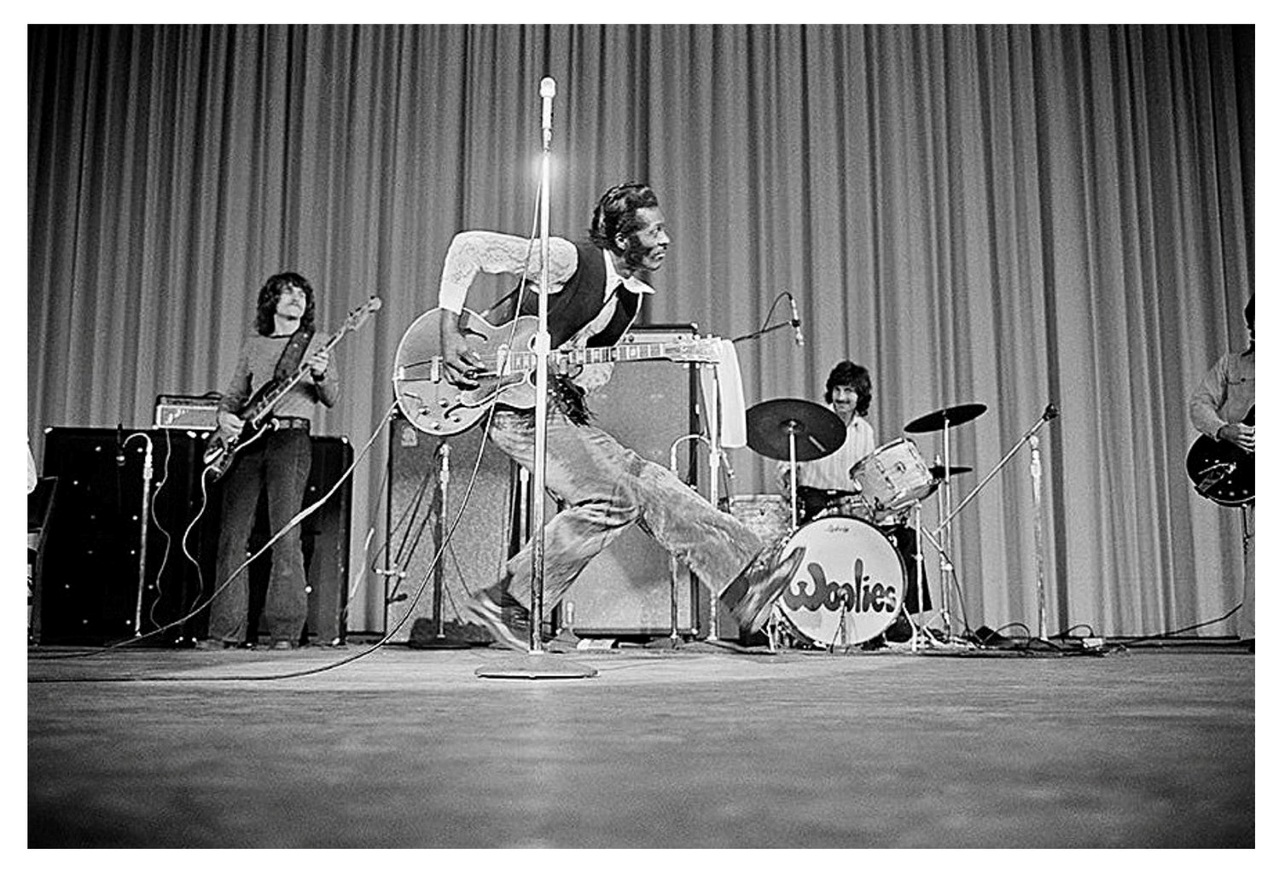The Accidental Legend: How Chuck Berry’s Duck Walk Was Born from a Wardrobe Crisis
🎸 It was 1956. Rock ’n’ roll was young, loud, and bursting with rebellious energy. In a time when teenagers were craving something new, something that felt like freedom, Chuck Berry didn’t just give them music — he gave them a movement.
But no one could’ve guessed that one of rock’s most legendary stage moves — the duck walk — was never meant to be part of the act. In fact, it was born from a moment of pure panic… and a pair of pants that didn’t fit right.

A Nervous Kid from St. Louis
Chuck Berry was already making waves in the mid-1950s. His guitar riffs on “Maybellene” and “Roll Over Beethoven” didn’t just shake the charts — they rattled the very foundation of American pop culture. But Berry, despite his swagger on stage, had his own share of anxieties. He was meticulous, always concerned about appearances and performance.
So when he got ready to perform in front of a massive audience — one of his earliest major appearances — he felt the pressure. The lights were hot. The stage was vast. The spotlight was all his.
And his pants? A little too tight.
✦
The Walk That Saved the Show
As the crowd roared, Chuck launched into one of his signature guitar licks, dancing across the stage in rhythm. But then he felt it — the unmistakable tug of fabric straining across his knees. Any sudden movement, and the pants might split. A wardrobe malfunction, in the 1950s, could ruin a career.
Thinking fast, he bent his knees low, shifted his weight forward, and kept moving — forward, heel to toe, guitar still blazing.
It looked strange. But it worked.
The crowd went wild.
What started as a crouch to save his outfit became the most iconic move in rock history: the duck walk. He had no idea it would stick. But the audience couldn’t stop cheering. It was fun. It was electric. It was new. And just like that, a mistake turned into magic.
✦
An Era Finds Its Swagger
In the years that followed, Berry didn’t just repeat the duck walk — he perfected it. With every stage show, he made the move part of his identity. When he dipped into that low-legged strut, guitar tilted, hair slicked, the crowd knew they were watching something revolutionary.
The duck walk wasn’t just a gimmick — it became a visual metaphor for everything rock ’n’ roll stood for: rebellion, creativity, and quick improvisation in the face of chaos.
It also helped separate Chuck from his contemporaries. Elvis had the hip swivel. Jerry Lee had the piano-stomp. Little Richard had the scream. And Chuck? Chuck had the duck.
✦
A Legacy in Motion
Decades later, that duck walk would be mimicked by generations of performers. From Angus Young of AC/DC (who exaggerated the move in his schoolboy outfit) to Michael J. Fox in Back to the Future, the duck walk became shorthand for cool.
But beyond the showmanship, it was Chuck Berry’s ability to move through the moment — to adapt under pressure — that set him apart. He didn’t freeze. He didn’t panic. He created.
And maybe that’s the real lesson behind the duck walk. Not just that legends are born in the spotlight — but sometimes, they’re born in moments of fear, insecurity, or even tight pants.
✦
The Man Behind the Move
Chuck Berry wasn’t perfect. His life, like his music, was filled with ups and downs, highs and heartbreaks. But his contribution to culture is undeniable. He brought poetry to teenage heartbreak, electricity to rhythm and blues, and motion to music that once stood still.
He showed that you didn’t have to be born into royalty to become a king — sometimes, all it took was a guitar, a beat, and a little accidental choreography.
So the next time you see a guitarist strutting low across the stage, think of Chuck Berry. Think of that nervous moment in 1956, the too-tight pants, the flash decision — and the birth of something unforgettable.
Because in rock ’n’ roll, the smallest steps often make the loudest echoes.